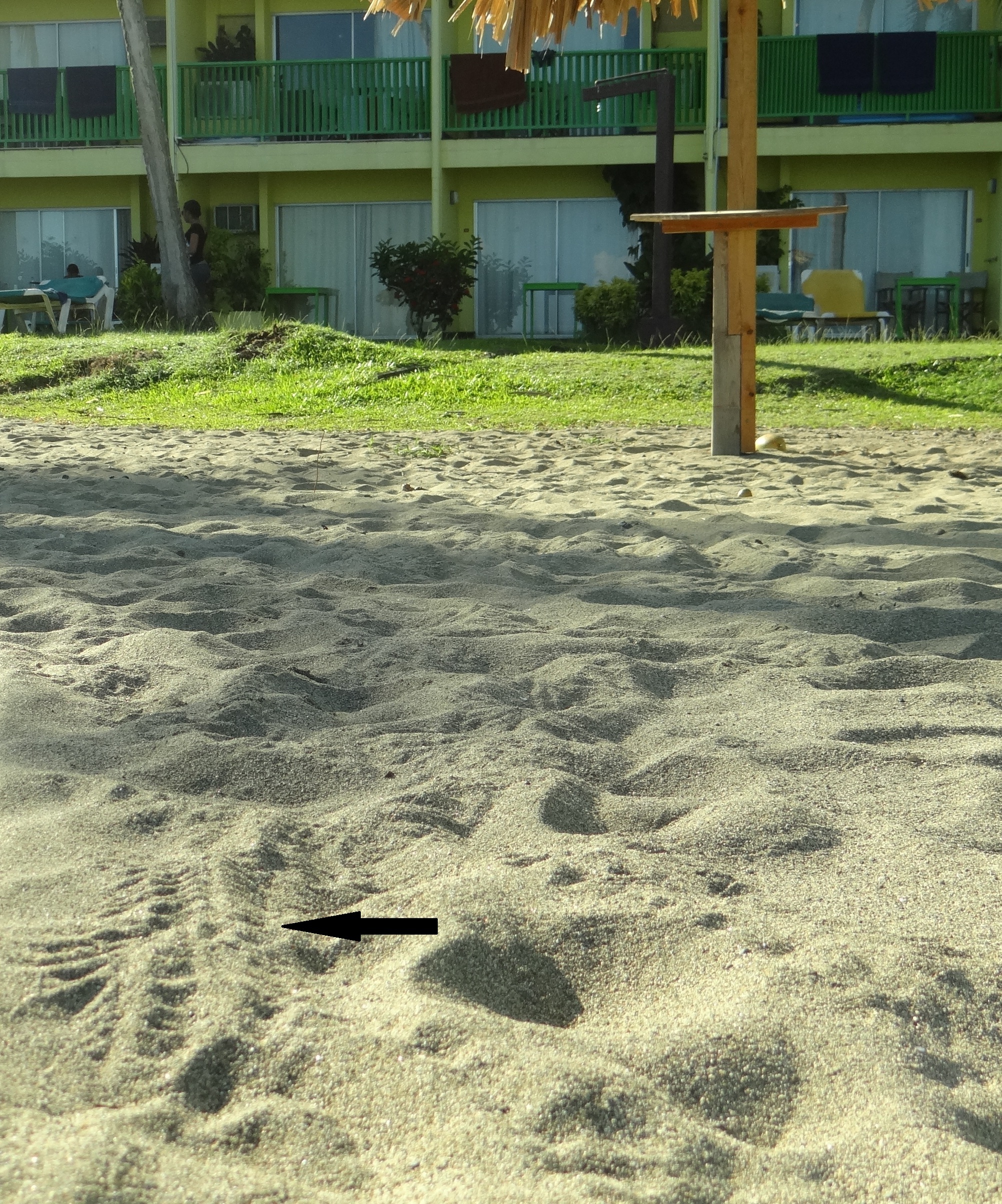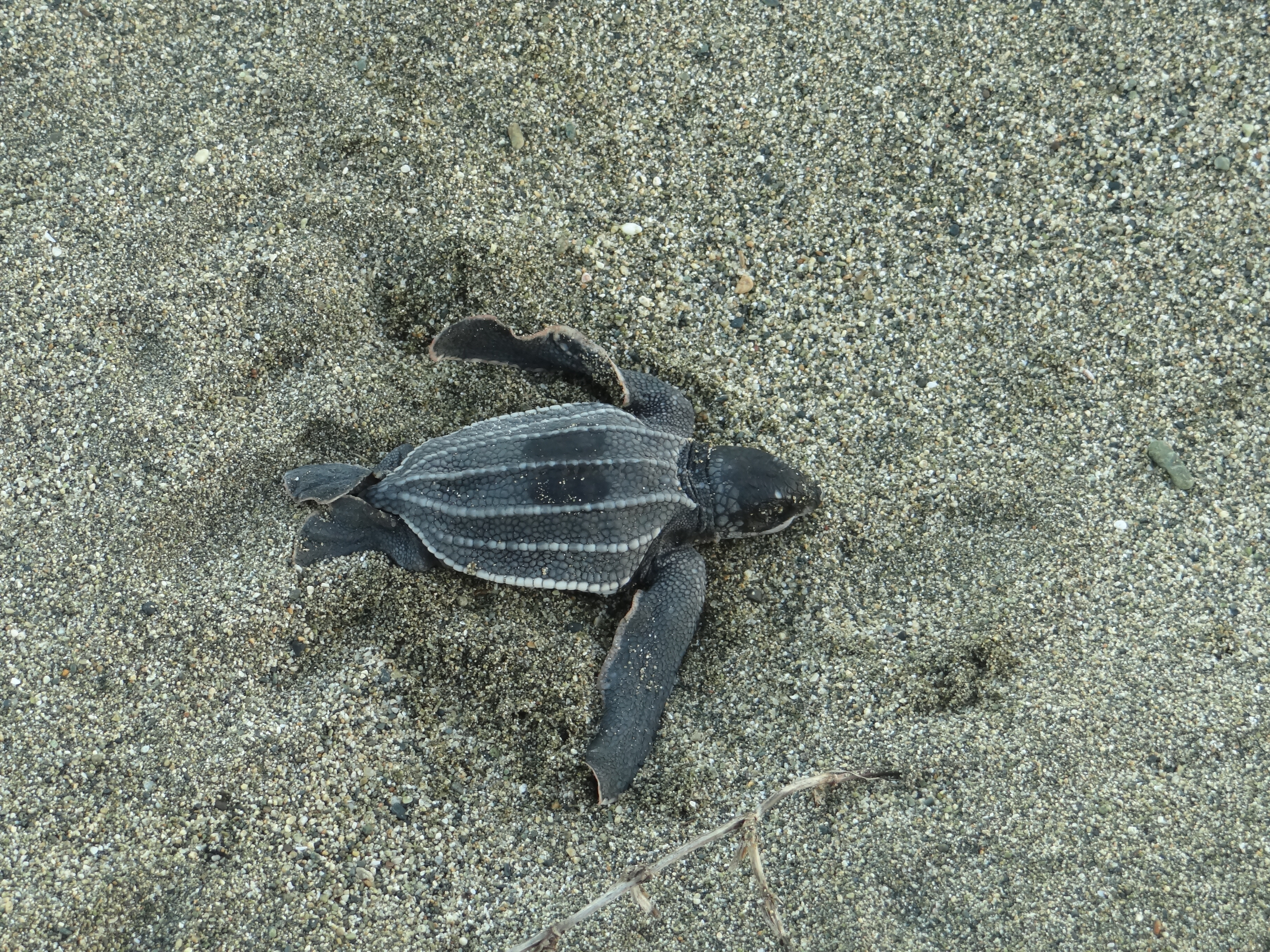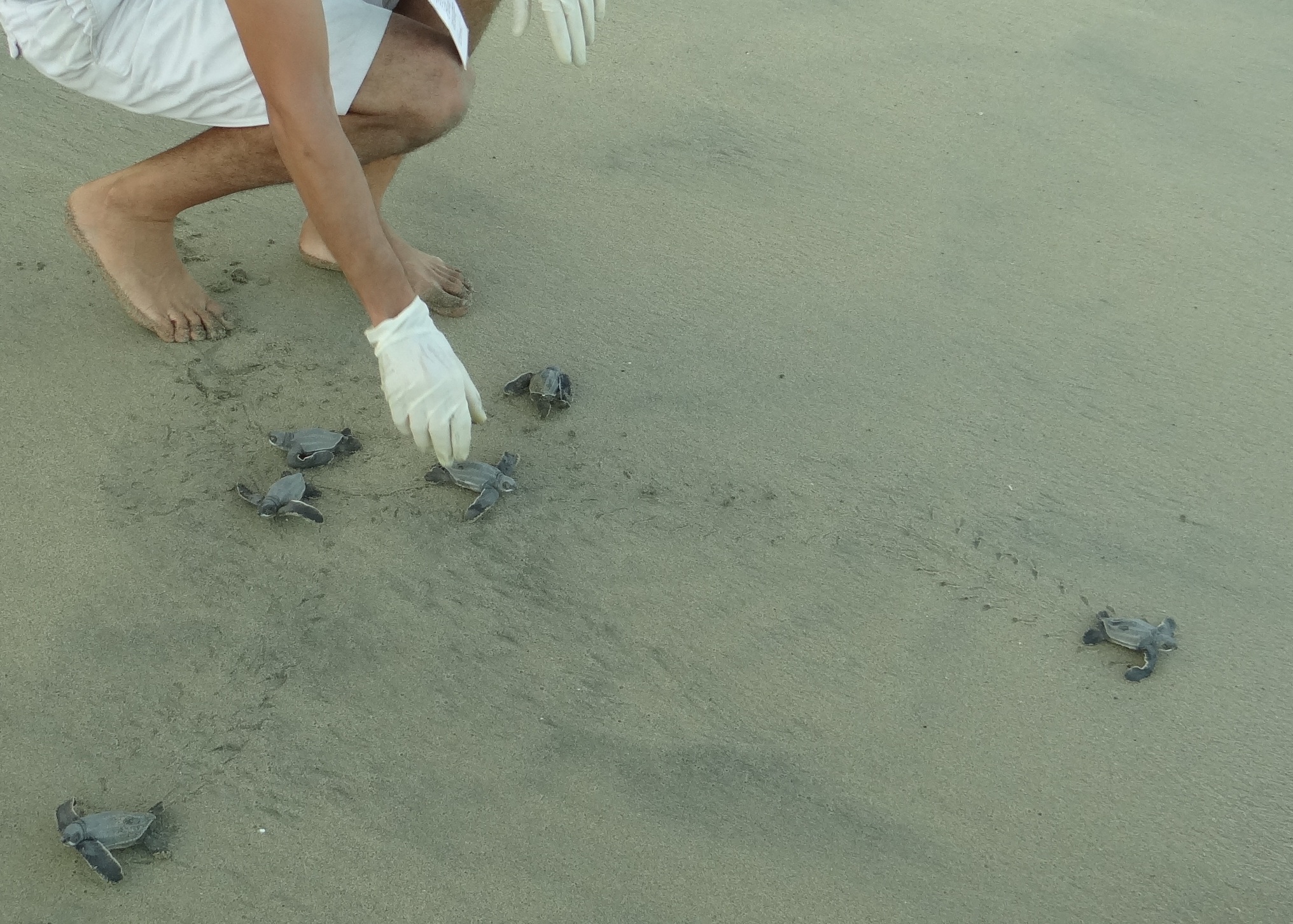The leatherback turtle (Dermochelys coriacea), is the largest of all living turtles and can reach more than 3 meters from head to tail and weighs
more than 900 kg. They are unique amongst reptiles for their ability to maintain high body temperatures using metabolically generated heat. It has been
measured experimentally that leatherback turtles can maintain deep body temperature of 18 degrees C above water temperature [
Leatherback turtles have unique anatomy and physiology. They have the most hydrodynamic body design of any sea turtle. Instead of bony carapace the leatherback turtles have thick, leathery skin with embedded minuscule osteoderms. They are the only reptiles which lack β-keratin in their scales. Leatherback turtles differ from other sea turtles in their susceptibility to diseases. For example a disease known as fibropapillomatosis which manifests through external tumours in sea turtles have never been diagnosed in leatherback turtles. Unique physiology of leatherback turtles has important implications for understanding vertebrate biology, and is another strong argument for preservation of this endangered species.
Although leatherback turtles have survived on this planet for over 150 million years, the impacts of recent human activities have resulted in a dramatic decline in their population. In many countries they are captured, killed, and traded for their meat, shells and their leather flippers. In addition many turtles die due to injuries or drowning caused by being accidentally caught by fishing boats. Other factors threatening leatherbacks globally include loss or degradation of nesting habitat from coastal development, nest predation by native and non-native predators, marine pollution and debris.
Here we describe our observations on the threat of artificial lighting to survival of hatchlings in the Turtle beach in Tobago. Trinidad and Tobago are amongst the most important leatherback nesting sites in the world, with approximately 20% of the total world population nesting in these islands. One of the primary leatherback nesting beaches in Tobago is the Turtle Beach, which is part of the Great Courland Bay on the island’s north west coast. Hundreds of nests are laid annually on the beach with around 110 eggs per clutch, 85% of which are viable. The unviable eggs are smaller, filled mostly with water and laid on top of the viable eggs. The presence of villas and hotels near the beach results in constant light pollution of the nests. The eggs hatch in about sixty to seventy days. Hatchlings usually emerge from the nest at night due to the favourable cooler temperatures. The unviable eggs burst during the hatchlings' scramble to the surface and the water that is released from them provide an easier path for the hatchlings. Once on the surface they use moon light and its reflections from water to find their way to the sea at night.
In August 2012 we witnessed the effect of artificial lights on the leatherback hatchlings’ orientation on the Turtle Beach. Observation on morning track on the beach (Figure 1) demonstrates that a large number of hatchlings are disoriented and heading inland instead of out to sea.

We have found hatchlings which had died of dehydration in the sun (Figure 2) and witnessed incidents when they were caught by predators like birds or dogs during daylight. These incidents demonstrate that currently artificial lighting of the nesting beaches is the biggest threat to survival of hatchlings and a major factor in declining of leatherback turtle population.
At present the most effective measure to prevent turtle hatchlings disorientation are beach patrols. The work of Save Our Sea Turtles (SOS) – a registered

community based organization, founded in 2000 with a mission to conserve Tobago’s sea turtles is already giving results. Regular patrols help disoriented hatchlings to find the sea and prevents poaching of these remarkable creatures (see Figure 3 and supplemental video).

References
- Frair W, Ackman RG, Mrosovsky N. Body Temperature of Dermochelys coriacea: Warm Turtle from Cold Water. Science 1972; 177(4051): 791-793.
Reference Link - Lopez-Mendilaharsua M, Rochaa CFD, Domingoa A, Wallacea BP, Millera P. Prolonged deep dives by the leatherback turtle Dermochelys coriacea: pushing their aerobic dive limits. Marine Biodiversity Records 2009; 2: e35.
Reference Link - Hays GC, Houghton JDR, Myers AE. Endangered species: Pan-Atlantic leatherback turtle movements. Nature 2004; 429: 522.
Reference Link - Doyle TK, Houghton JDR, O'Suilleabhain PF, Hobson VJ, Marnell F, Davenport J, Hays GC. Leatherback Turtles Satellite Tagged in European Waters. Endang Species Res 2008; 4: 23-31.
>Reference Link